Get PeakVisor App
Sign In
Search by GPS coordinates
- Latitude
- ° ' ''
- Longitude
- ° ' ''
- Units of Length

Yes
Cancel
Share ×

Scan the QR code and open PeakVisor on your phone
❤ Wishlist ×
Choose
Delete
There are 3844 named mountains in Alaska. Reaching an elevation of 20,308ft (6,190m) Denali (also known as Mount McKinley) is the highest and the most prominent mountain. In fact, it is the third most prominent mountain in the world. Alaska is admirably referred to as “the last frontier” and “the land of the midnight sun,” but what’s it’s really infamous for is incredible, craggy, high-altitude summits and rugged, wild terrain. Alaska is the largest state in the United States, encompassing a whopping 570,380 square miles.
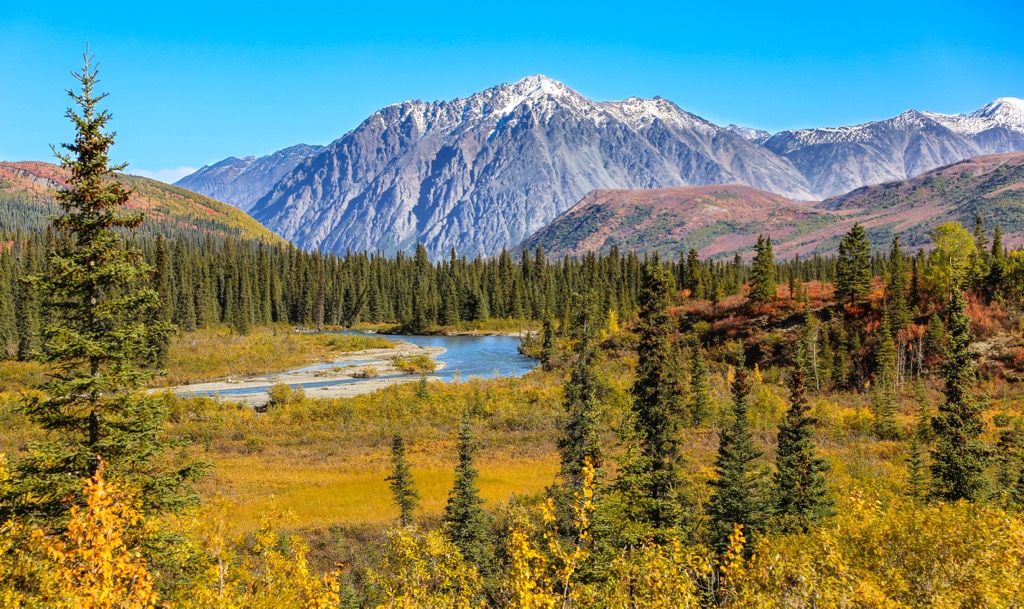
Generally speaking, Alaska is divided into five regions: The Northwest and Arctic region, Interior Region, Southwest Region, Southcentral Region, and Southeast Region. Within these regions are fourteen major mountain ranges: The Brooks Range, Seward Peninsula Mountains, Nulato Hills, Yukon Tanana Uplands, Ogilvie Mountains, Kuskokwim Mountains, Alaska Range, Talkeetna Mountains, Wrangell Mountains, Aleutian Range, Kenai Mountains, Chugach Mountains, St. Elias Mountains, and the Coast Mountains.
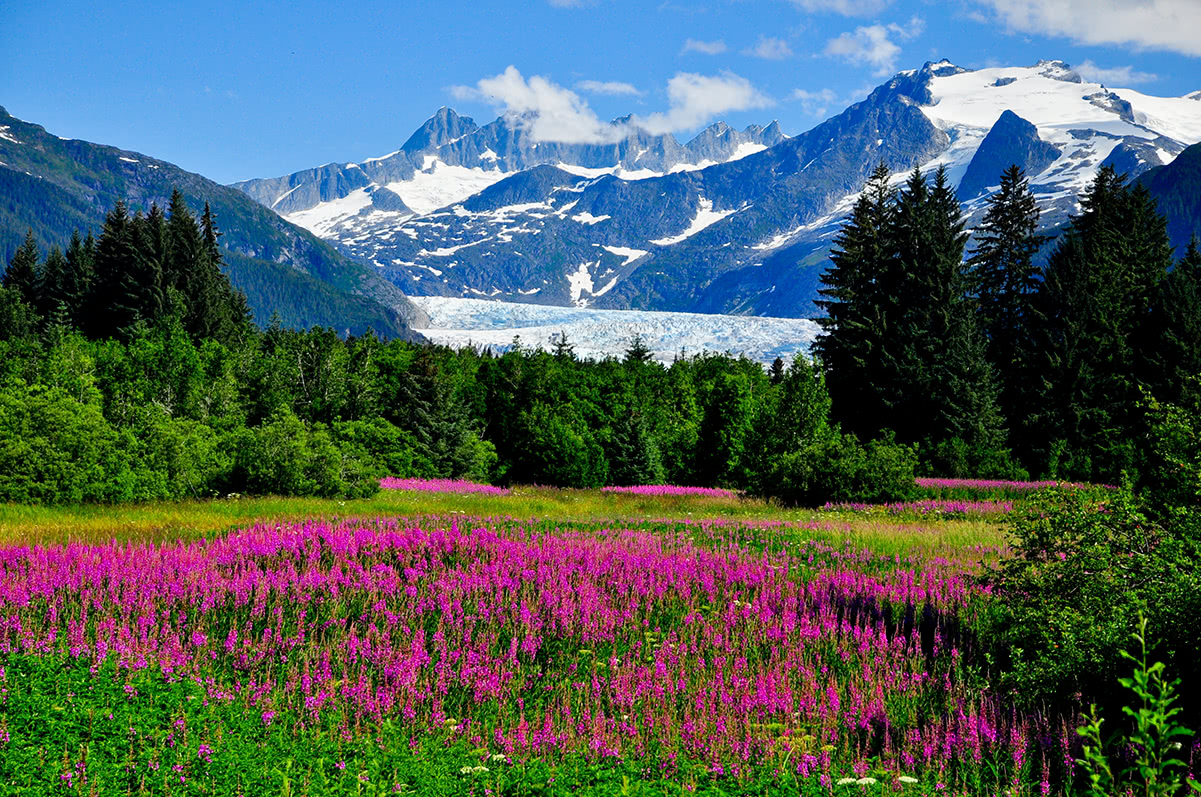
One of the most rugged and recognizable mountain ranges, the Brooks Range, sits just south of the Arctic foothills and spans approximately 600 miles of the state from the Chukchi Sea to the Canadian border. The Brooks Range is the highest mountain range within the Arctic Circle. Not only is the Brooks Range the farthest north, but it also contains a group of isolated subranges with peaks ranging from 3,000 to nearly 9,000 feet at the summit of Mount Isto. The Brooks Range is known to be icy, rugged, and remote, so visiting this region generally requires extensive knowledge of mountaineering and backcountry survival skills. Notable peaks in the Brooks Range include Mount Hubley, Mount Chamberlin, and Mount Michelson.
Often referred to as the cooler, wetter version of the Great Basin in the western United States, central Alaska (also known as Interior Alaska) is characterized by vast highlands and basins. Generally, the uplands are dissected into three major areas: the eastern highlands, western highlands, and the Seward Peninsula. The mountains in this region are usually much lower in elevation than the mountains to the north and south.
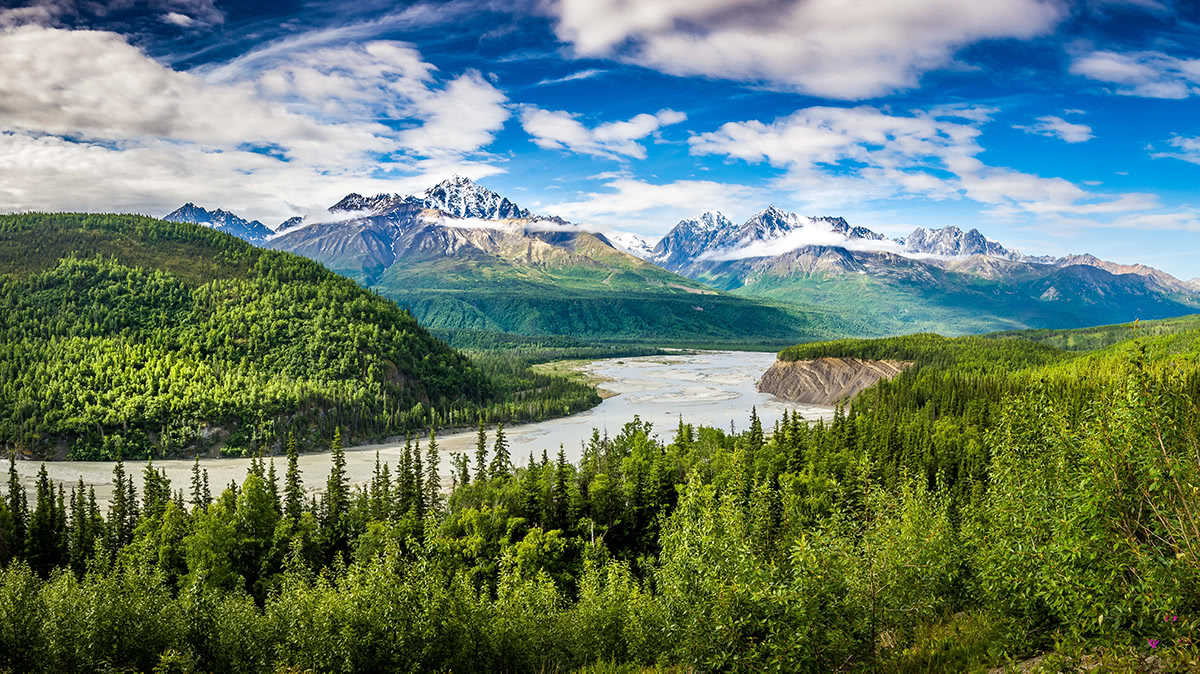
The Seward Peninsula Mountains, for example, are characterized by rolling hills and small subranges like the Kigluaik Mountains, Bendeleben Mountains, Darby Mountains, and the York Mountains. In fact, the tallest peak in this region is Mount Osborn, which reaches just 4,705 feet in elevation. Just south of the Seward Peninsula, the Nulato Hills, a remote span of lush rolling hills reaches only 3,399 feet at the top of Debauch Mountain. Nearby, the Yukon-Tanana Uplands span 300 miles and contain both the White Mountains and Ray Mountains. Although alpine peaks and glaciers often steal the limelight, this region of the state is often referred to as “the heart of Alaska.”
Similarly to previously mentioned inner region ranges, the Kuskokwim mountains begin in the interior, west of Fairbanks. Although these are no less impressive than other recognizable peaks and ranges in the state, they are incredibly difficult to access. However, those that make the trek to the Kuskokwim mountains can appreciate the truly wild and remote wilderness.
In the southern region of Alaska, the Alaska, Aleutian, Talkeetna, Chugach, Wrangell, and portions of the St. Elias Mountains dominate the landscape. The mountain ranges form what is considered to be one of the most substantial and spectacular mountain systems in North America. In fact, tucked within these extraordinary ranges are ten of the tallest peaks in America: Denali, Mount Saint Elias, Mount Foraker, Mount Bona, Mount Blackburn, Mount Sanford, Fairweather Mountain, Mount Hubbard, Mount Bear, and Mount Hunter.
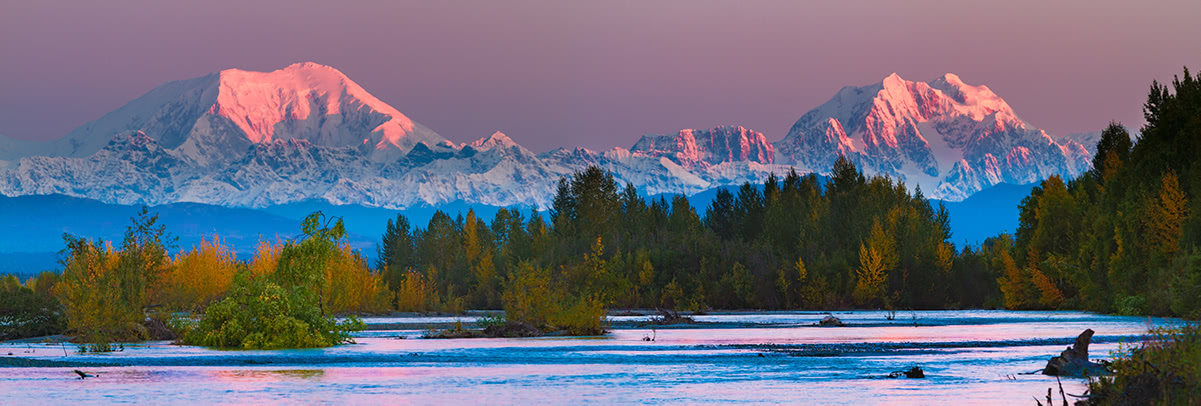
Mount Foraker and Mount Hunter at sunrise
The Alaska range, one of the state’s largest mountain ranges, is a 600-mile arc of mountains that stretches from the Alaskan Peninsula to the Alaska-Canada border and is characterized by massive glaciers and peaks. Home to Denali National Park, the Alaska range is arguably the most popular for outdoor recreation and tourism. Denali, the tallest mountain in the Alaska range, also happens to be the tallest in North America and one of the tallest in the world (if measured base-to-peak). Mount Spurr, another notable peak in the Alaska range, is not only the tallest peak in the Aleutian arc but is also known as the infamous active stratovolcano that erupted in 1992. In fact, Alaska is said to contain over 100 volcanoes, many of which, like Mount Redoubt, Novarupta, and Mount Pavlof are still very active.
Despite its mostly mountainous terrain, Alaska has more to offer than towering mountain summits. The state has more coastline than the rest of the United States combined and is home to more than three million lakes, including Lake Iliamna, which covers 1,000 square miles and is one of the largest lakes in the states. There’s also plenty to explore in the nation's two largest forests, Tongass and Chugach, which are found in southeast and southcentral Alaska.
Alaska’s terrain is unparalleled in terms of exploration and outdoor recreation potential. The state offers unforgettable scenery, glorious summits, pristine rivers and glaciers, cascading waterfalls, and, of course, incredibly diverse, remote wilderness to explore.
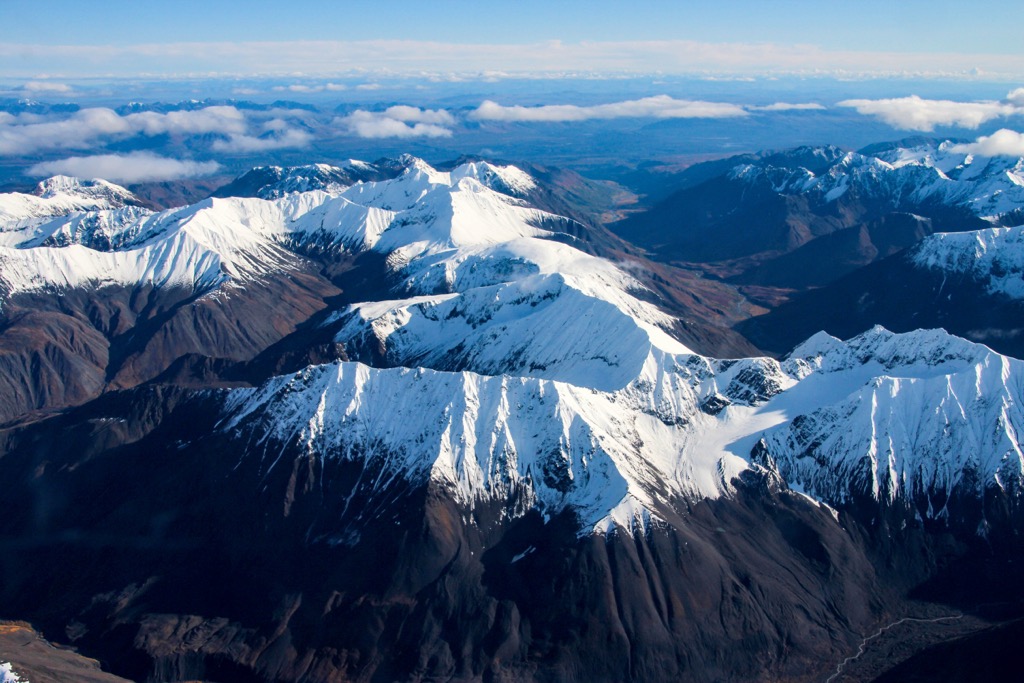
With the total of eight national parks, Alaska is home to the US largest and the smallest one. The only state with more national parks is California, it scores 9 of them.
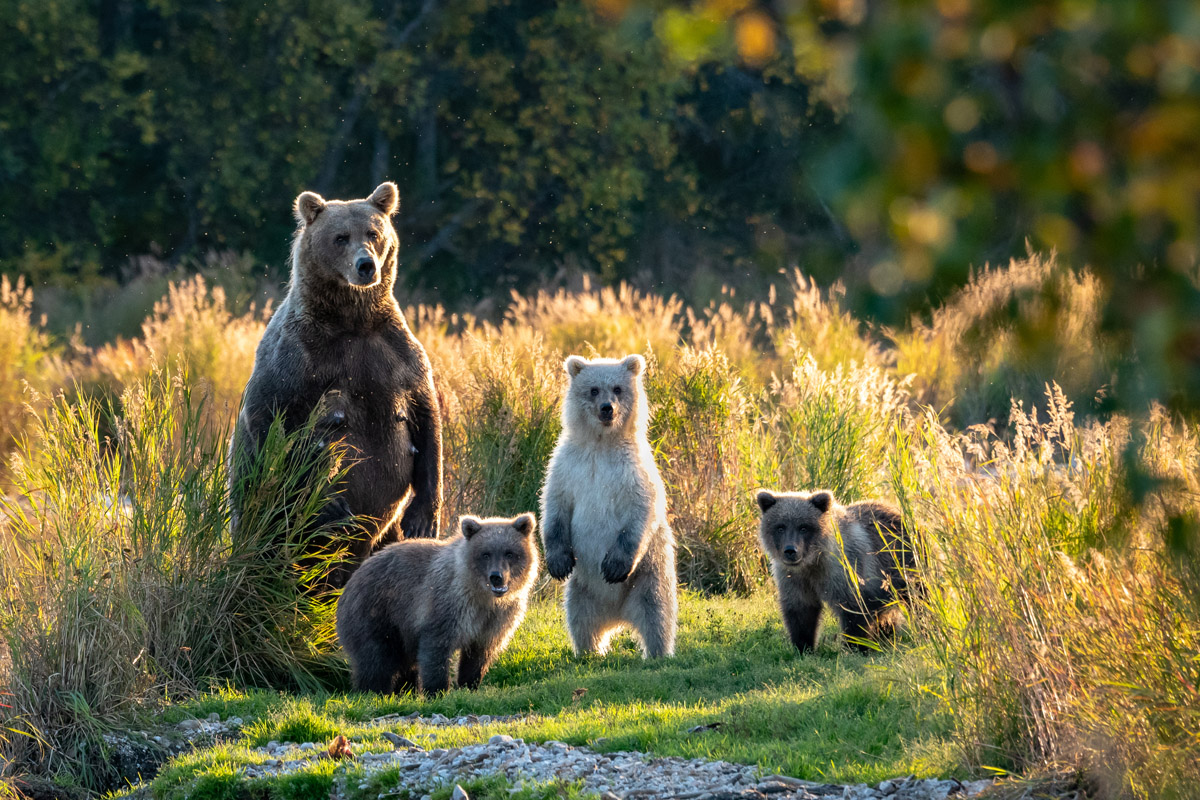
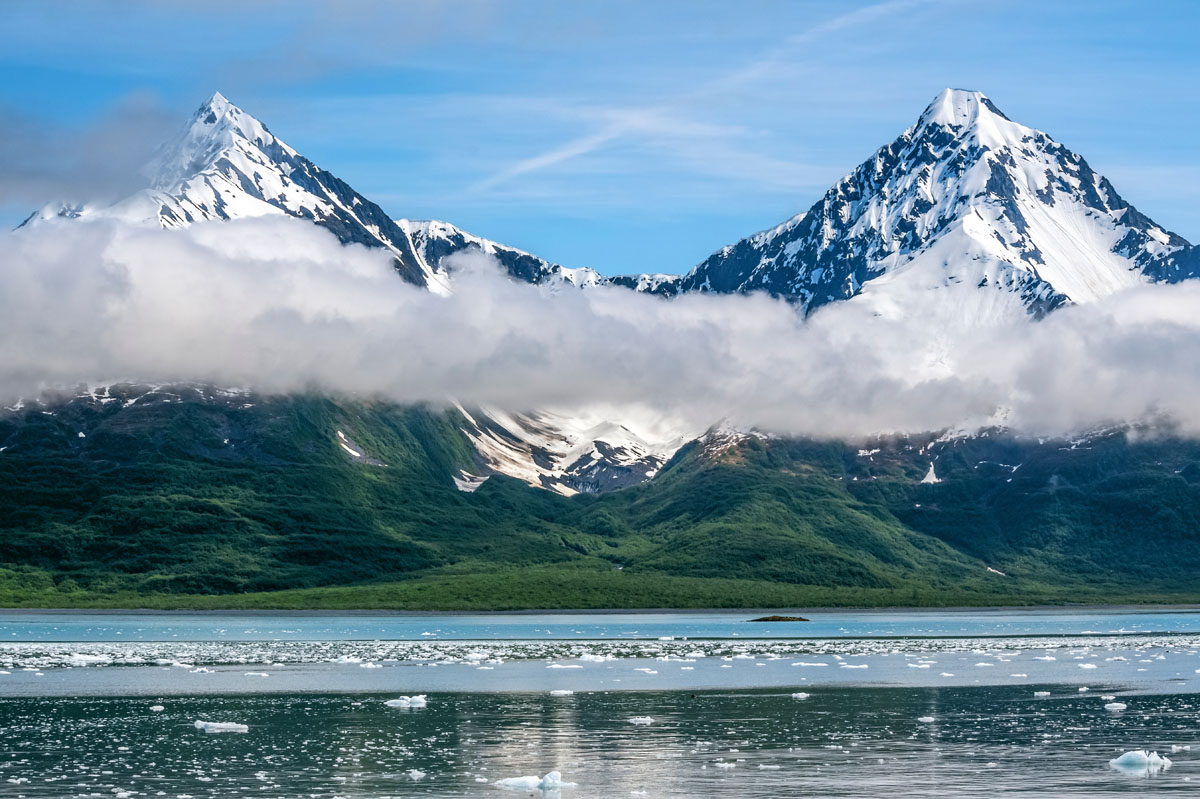

A trip to Alaska simply wouldn’t be complete without visiting the tallest mountain in North America. Just south of Fairbanks, Denali National Park is a six-million-acre reserve packed with taiga, tundra, glaciers, wildlife, and tons of outdoor recreation potential. Although there are not many marked hiking trails in the park, Denali is meant to allow travelers to explore vast, untampered wilderness and permits off-trail exploration. If you’re too intimidated to venture into the backcountry or off trail, there are a few trails to choose that feature awe-inspiring views of Denali and other park highlights, like the 2.7 mile (one way) Mount Healy Overlook Trail or the 2-mile (roundtrip) trail to Horseshoe Lake.

Just outside of Seward, the well-maintained and heavily trafficked Exit Glacier trail offers visitors the unique opportunity to trek to an enormous glacier. Avid hikers will opt to jump on the Harding Icefield Trail, which ascends nearly 4,000 feet over 4 miles (each way) and takes you to the top of the glacier. Once at the top, you’ll be rewarded with unobstructed views of the incredible Harding Ice Field and surrounding Alaskan terrain.
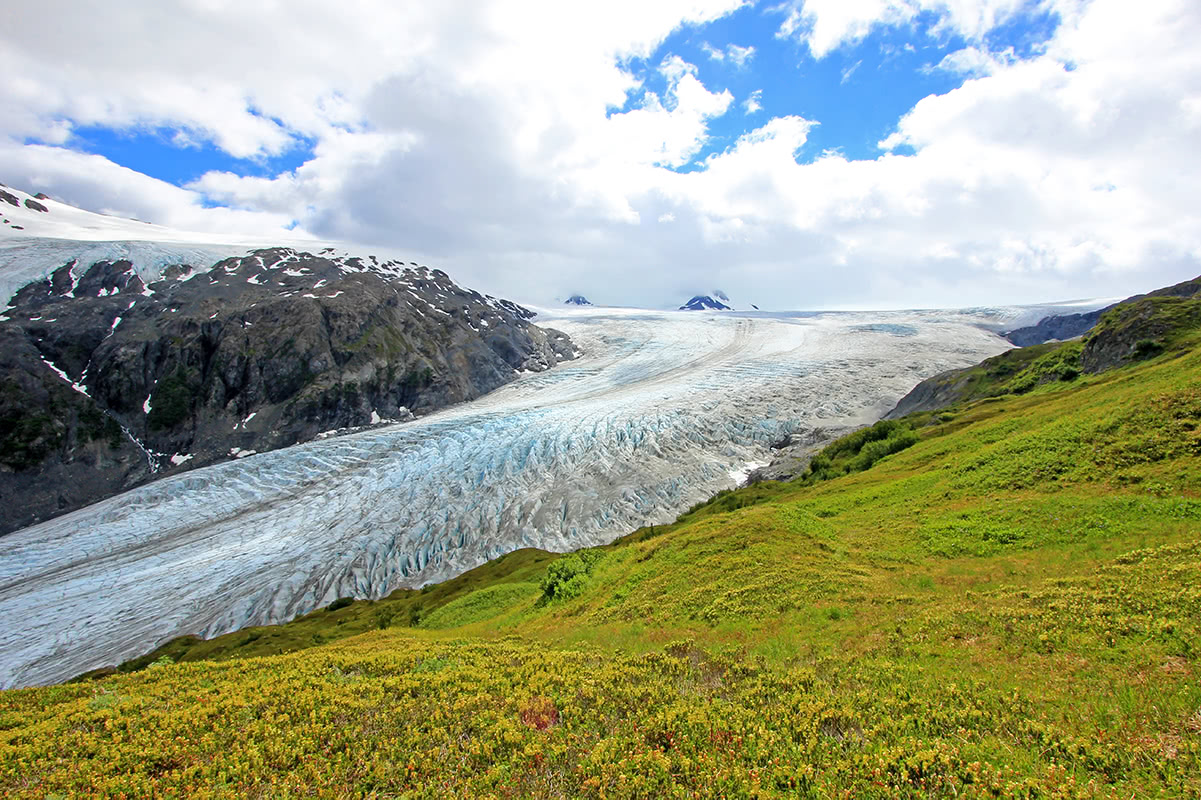
One of the most heavily trafficked trails in Alaska, Flattop Mountain sits just outside of Anchorage and offers panoramic views of the Chugach Mountains, the Turnagain Arm waterway, and the Cook Inlet. On a clear day, hikers can even catch a glimpse of Denali and the Aleutian Islands. To get to the top, hikers will trek just 3 moderate miles (out and back) and traverse a series of wooden steps before scrambling to the summit.
There are plenty of hiking trails and areas close to major cities and accommodations in Alaska, but outdoor enthusiasts will agree that for the most authentic, immersive Alaskan experience, you’ll need to venture to more remote stretches of isolated wilderness found throughout the state.
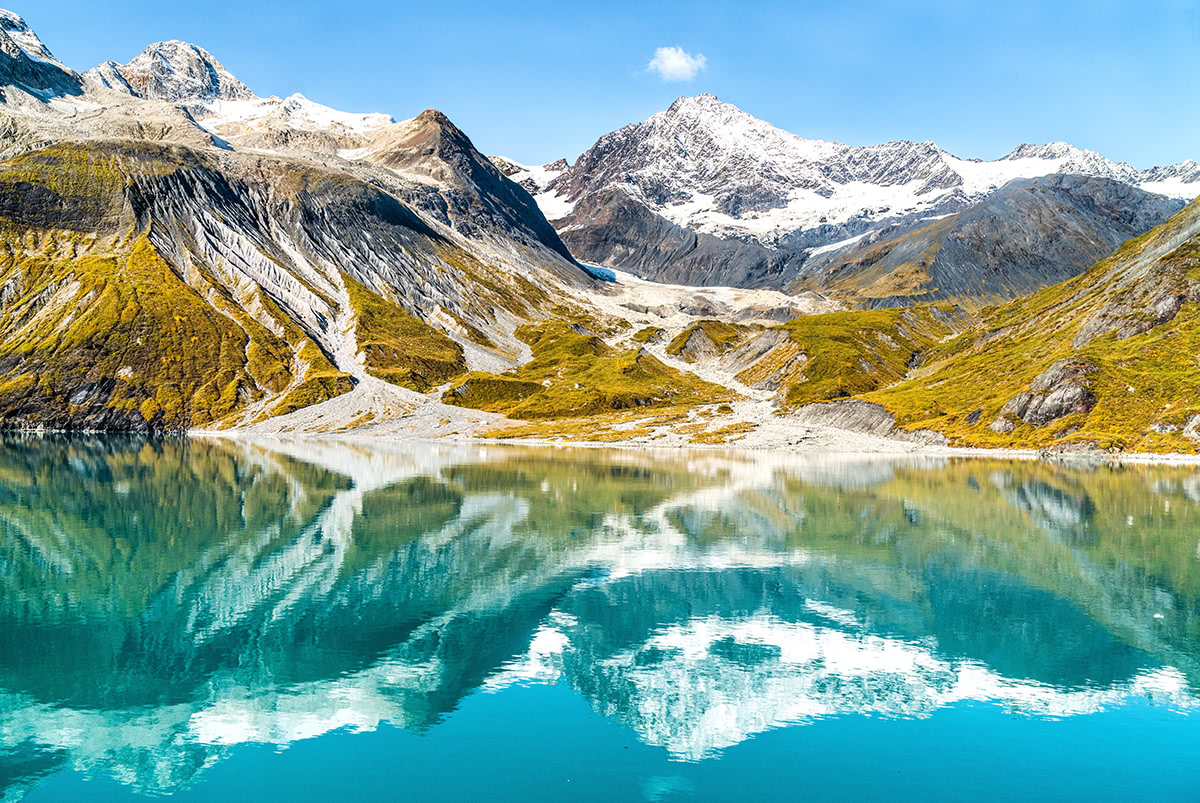
Incredible scenery and solitude can be found in areas like Glacier Bay National Park, Kenai Fjords National Park, Katmai National Park, the Arctic Coast, and the Kodiak National Wildlife Refuge. However, most of these destinations require a significant amount of preplanning, advanced backcountry and/or mountaineering skills, and/or special accommodations. In fact, a large portion of Alaska’s most prized wilderness is completely void of roadways, resources, and amenities. Nevertheless, true adventure-seekers that choose to visit Alaska’s uninhabited, remote regions are sure to experience nature in its purest form.
Lake Clark National Park and Preserve is remote, to say the least, so don’t expect an extensive network of maintained trails to guide you on your journey. However, if you’re willing to get off the beaten path, so to speak, there’s endless adventure to be found in Lake Clark National Park and Preserve.
Situated in the southern part of Alaska, Katmai National Park and Preserve is a huge swath of 4,093,077 acres (16,564km2) of land known for its abundant population of brown bears. The Park and Preserve are so large that they are somewhere between the sizes of Connecticut and New Jersey. In a park as large as Katmai, you can expect nearly unlimited hiking and backpacking opportunities – just don’t expect there to be any trails!
Since there are no trails in Gates of the Arctic National Park, all visitors need to be prepared to navigate in trail-less terrain with mountain passes, tundra, and roaring rivers. Most people aim to travel six miles a day while backpacking, finding that the tussock, boggy ground, and lack of trails make walking difficult.
To plan a trip into Gates of the Arctic, you need to first figure out what air taxis are available to you from Fairbanks or Bettles, then have a look at a topographic map and start dreaming. The Arrigetch Peaks area is one of the most popular hiking areas in the park, but you really can’t go wrong with any backpacking trip to the Brooks Range.
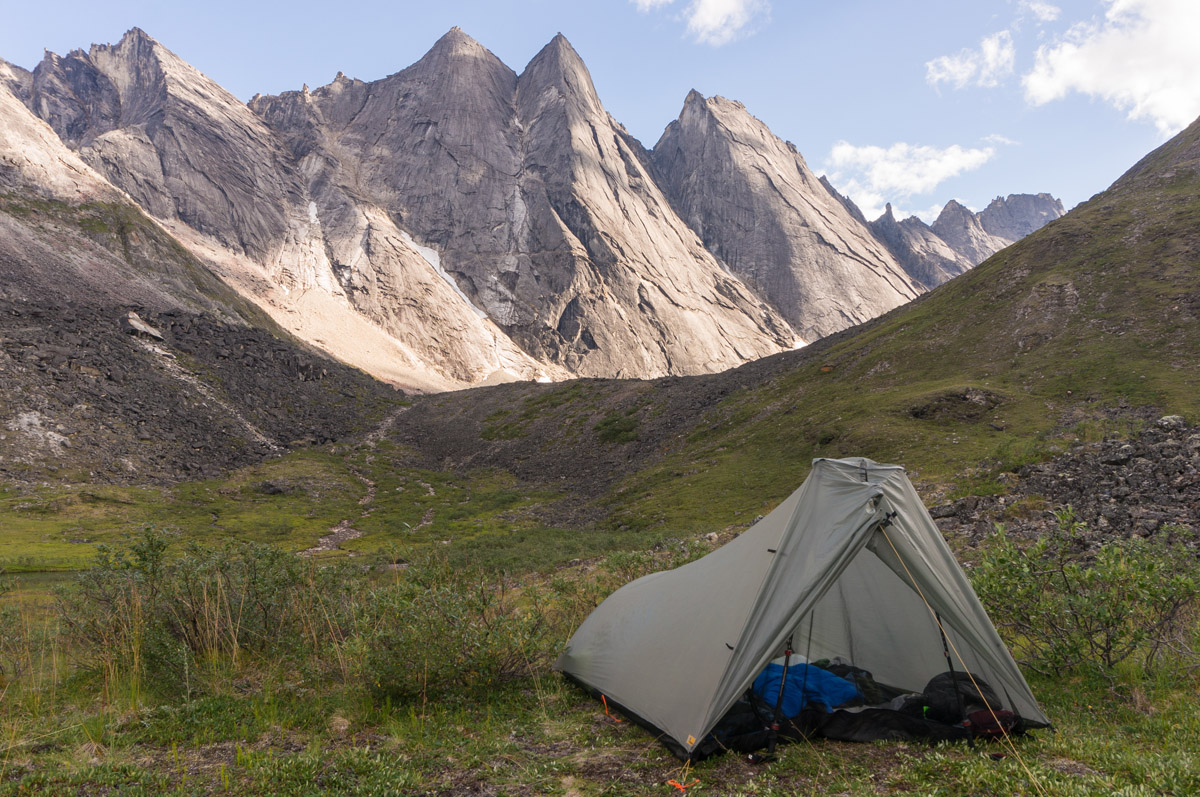
If you’re looking for the easiest way to experience Alaska’s incredible mountain terrain, the state is packed with postcard worthy scenic drives, most of which are nearby major cities and resorts.
Arguably one of the most beautiful scenic drives in the state, the Seward Highway travels south out of Anchorage and offers nonstop mountain scenery and several stopping points for outdoor activities. In fact, the Seward Highway, which connects Anchorage with the Kenai Peninsula, is one of only 15 drives in America that is designated as an “All American Road.” This drive highlights Chugach State Park’s 3,000-foot peaks, offers incredible vistas of Cook Inlet and the namesake Turnagain Arm, as well as turnouts where visitors can spot beluga whales and Dall sheep.
Once upon a time, the partially unpaved Denali Highway was the only route connecting Paxson and Cantwell traveling into Denali National Park. In just a few short miles, you’ll ascend from forest to tundra, taking in stunning mountain views and vast stretches of wilderness. Denali Highway highlights the iconic Alaska Range and the Amphitheater Mountains, as well as the Maclaren glaciers descending from Mount Hayes, and the northernmost extension of the Talkeetna Mountains.
Tucked within the Talkeetna Mountains between Willow and Palmer, Hatcher Pass is considered one of Alaska’s best-kept secrets. Not only does the road travel through quintessential Alaskan mountain terrain, but offers several alpine hiking trails, a historic mine, and pristine glacier-fed lakes. From Anchorage, the scenic drive will take approximately 3-hours (roundtrip), but the pass can also be accessed while visiting Talkeetna, Denali, and Fairbanks.
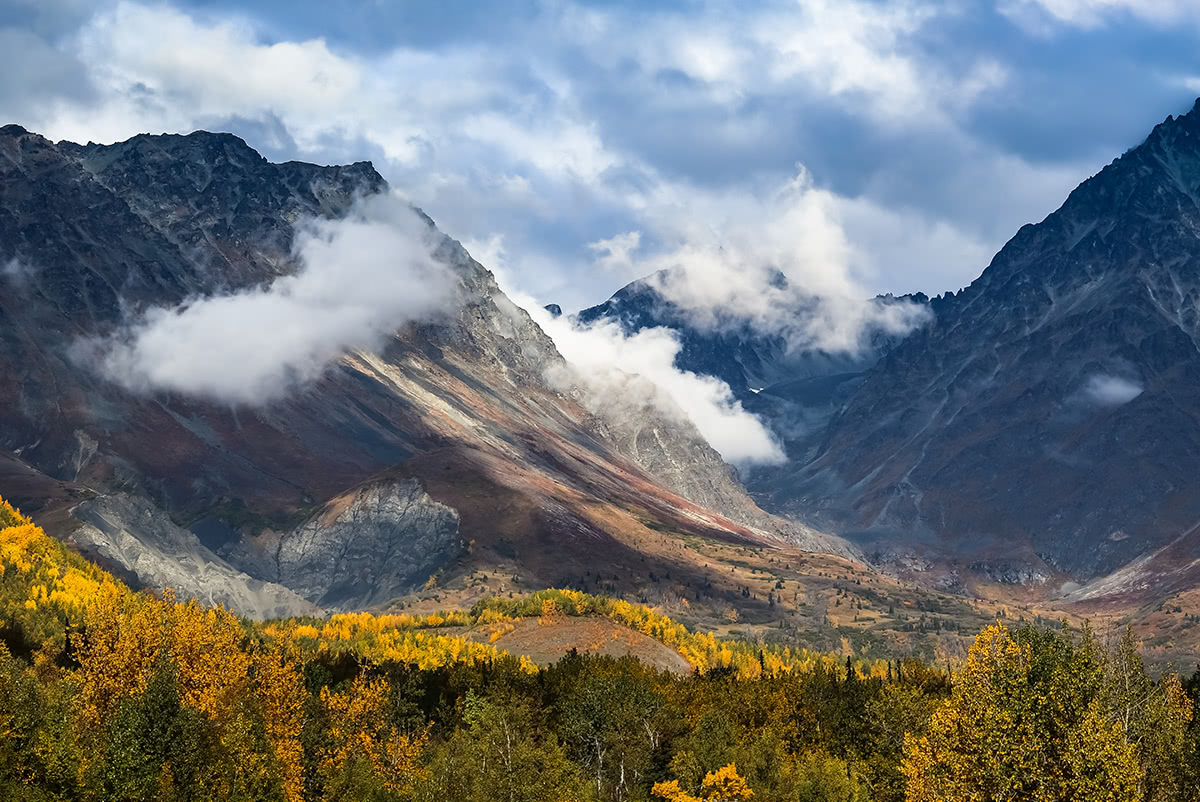
Talkeetna Mountains
Nicknamed “The Golden Heart of Alaska,” Fairbanks is best-known for two things - the midnight sun (in the summer) and the aurora borealis (in the winter). Although the city itself isn’t teeming with outdoor recreation potential, in comparison to other Alaskan towns, during summer months, visitors take advantage of 24 hours of daylight to explore the nearby White Mountains or venture south to the Alaska Range. In the winter, Fairbanks is considered one of the best places in the world to view the northern lights and offers sightseeing tours, late-night hikes, and scenic drives that are ideal for experiencing the incredible aurora borealis.
Fairbanks is home to the Moose Mountain Ski Resort and the aptly named Mount Aurora Skiland, which both offer overnight lodging, amenities, and winter recreation opportunities.
Most visitors will fly into Anchorage to begin their Alaskan adventure. Anchorage accounts for more than half of Alaska’s population and offers a variety of museums, microbreweries, restaurants, accommodations, and of course, incredible mountain scenery. In fact, Anchorage is within close proximity to 60 glaciers, several national parks, and sits beneath the tallest peaks of the Chugach Mountains. From town, visitors have access to sightseeing and flightseeing tours, glacier and wildlife cruises, ample canoeing and kayaking opportunities, epic hiking and backpacking trails within Chugach State Park, shuttles to popular outdoor recreation areas like Flattop Mountain, and more.
Anchorage is nearby Alaska’s premier year-round resort, the Alyeska Resort, which offers 650” of annual snowfall, 76 named trails, over 1,600 skiable acres, and a scenic aerial tram. Often referred to as “steep an deep,” Mount Alyeska is best-known for the North Face – North America’s longest continuous double black diamond run.
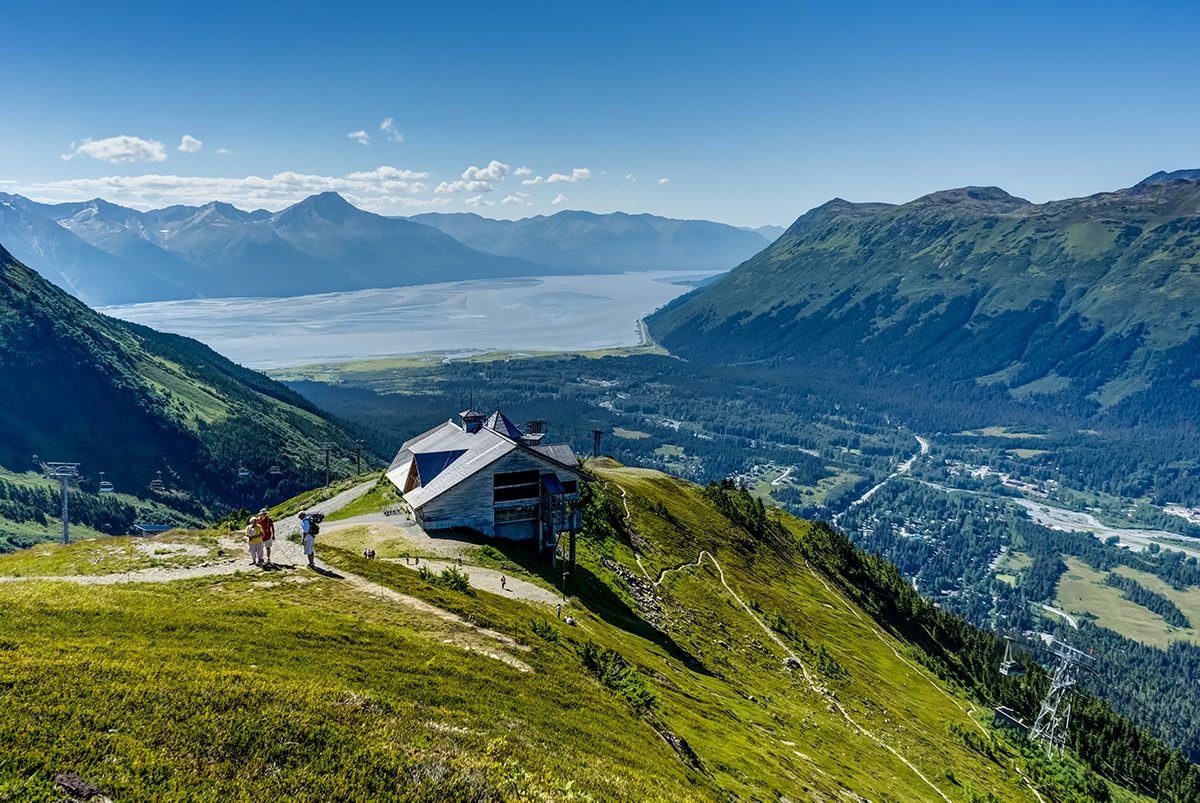
Situated at the head of Resurrection Bay on the Kenai Peninsula, Seward is one of Alaska’s most scenic cities and an ideal basecamp for outdoor recreation. Visitors to Seward will appreciate spectacular scenery, exploring glacial lakes and Harding Icefield, and sightseeing by foot, boat, or by air. Seward is within proximity to Kenai Fjords National Park, which offers over 600,000 acres of glaciated terrain to explore, including marine wildlife and tidewater glaciers. Seward is best-known for its fantastic hiking trails that highlight incredible peaks, stunning alpine lakes, and iconic Alaskan glaciers like Exit Glacier.
Juneau, which sits on one of the largest wilderness areas in the United States, is an ideal place to admire alpine peaks, cascading streams, bright bursts of wildflowers, and vast, incredible icefields. This outdoor enthusiasts’ paradise offers easy access to Mendenhall Glacier, as well as North America’s fifth largest icefield. Visitors can also opt to hike or take a scenic tram to the top of Mount Roberts for panoramic views of the Chilkat Mountains and Gastineau Channel. In the winter, the community-owned Eaglecrest Ski Area offers 640 acres of groomed runs, as well as access to untouched backcountry powder.
Due to remote and wild nature of Alaska, heli-skiing, backcountry skiing, and ski touring are extremely popular here, thus local ski resorts feature some really cool options and in general, skiing is very convenient in Alaska.
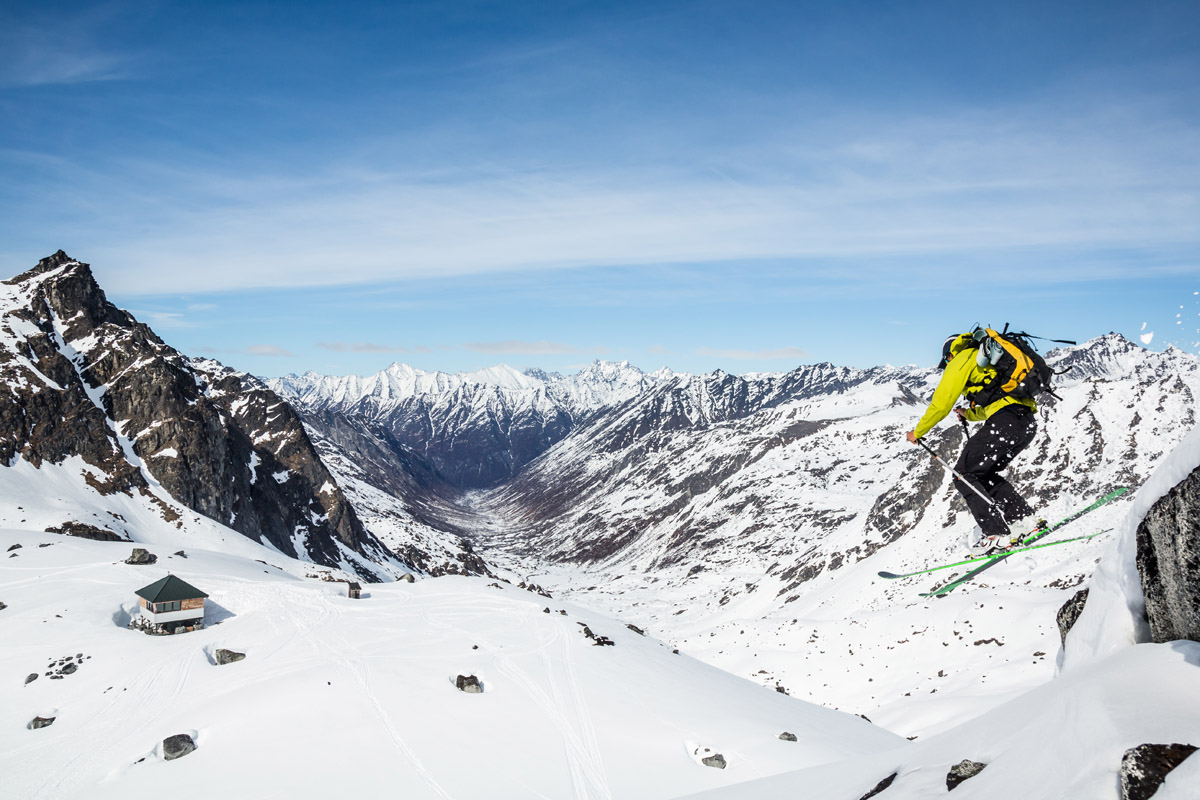
Skier above Snowbird hut and the namesake glacier.
Check the Alaska ski resorts map and the larger USA ski resorts map in the World Mountain Lifts section of the site. It includes information about open ski lifts / slopes in Alaska in real-time with opening dates and hours. There are also year-round cable cars, funiculars, cog railways, aerial tramways, and all other types of mountain lifts.
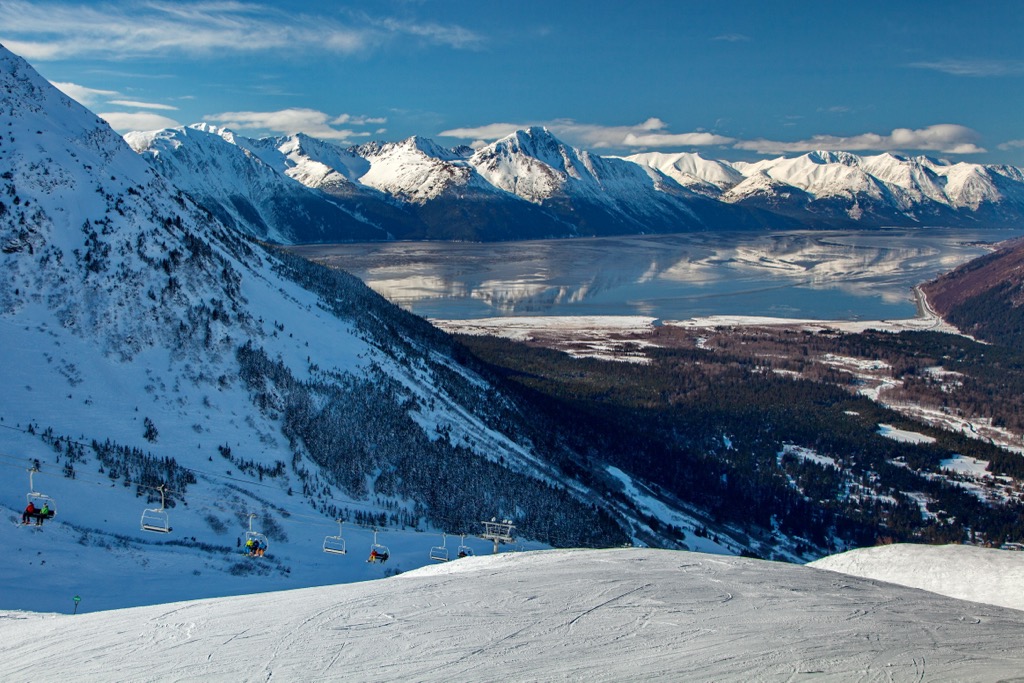
Explore Alaska with the PeakVisor 3D Map and identify its summits.








14er
ultra
glacier
alaska-13ers
fred-beckey-great-peaks
alaska-ultras
14er
ultra
glacier
4000ers-canada
alaska-13ers
fred-beckey-great-peaks
canada-sampler
alaska-ultras
yukon-ultras
14er
ultra
alaska-13ers
alaska-ultras
14er
ultra
glacier
alaska-13ers
alaska-ultras
14er
ultra
glacier
alaska-13ers
fred-beckey-great-peaks
alaska-ultras
14er
ultra
4000ers-canada
11ers-bc
alaska-13ers
canada-sampler
british-columbia-ultras
alaska-ultras
14er
ultra
glacier
volcano
alaska-13ers
alaska-ultras
13er
ultra
glacier
alaska-13ers
alaska-ultras
14er
ultra
glacier
4000ers-canada
alaska-13ers
fred-beckey-great-peaks
canada-sampler
alaska-ultras
yukon-ultras
13er
ultra
glacier
alaska-13ers
alaska-ultras
14er
ultra
4000ers-canada
alaska-13ers
alaska-ultras
yukon-ultras
